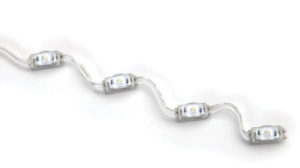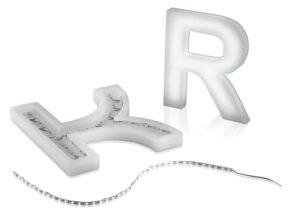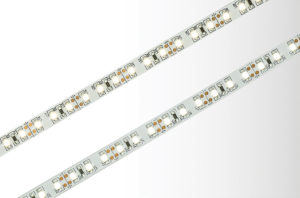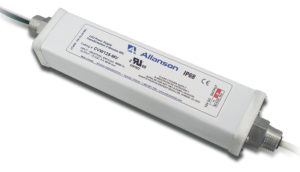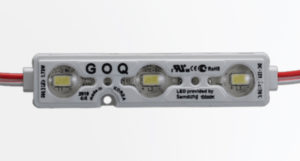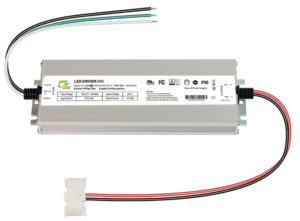IT’S NO SURPRISE that LEDs have become the leading choice for lighting signs. As the industry evolves, customers are seeing more and more options, from fluorescent bulb and neon replacements to LED strip lighting and modules to 12V and 24V power supplies. But how do you choose? Fluorescent bulb replacements have a specific-use case and neon replacements are pretty easy to figure out, but what about strips vs. modules and 12V vs. 24V power supplies? Let’s get down to basics.
LED modules at their core are fairly straightforward. A series of modules, which contains the lighting source, connects via wires used to join and power the runs. This makes them very easy to use in channel letters. There are a number of factors to consider when selecting modules including color, color temperature, placement to avoid hot spots and how much power is needed to ensure every letter is illuminated consistently. Luckily, the manufacturers generally provide the technical information for proper installation.
Modules are ideal for large, lit channel letters and weatherproof modules are readily available. But they can run into issues when dealing with smaller letters and signs. The solution for these compact cases is LED strip lighting. Whereas individual modules in a series are connected by wires, LED strips are a continuous row of lights on an adhesive backing — and they’re quite thin and flexible.
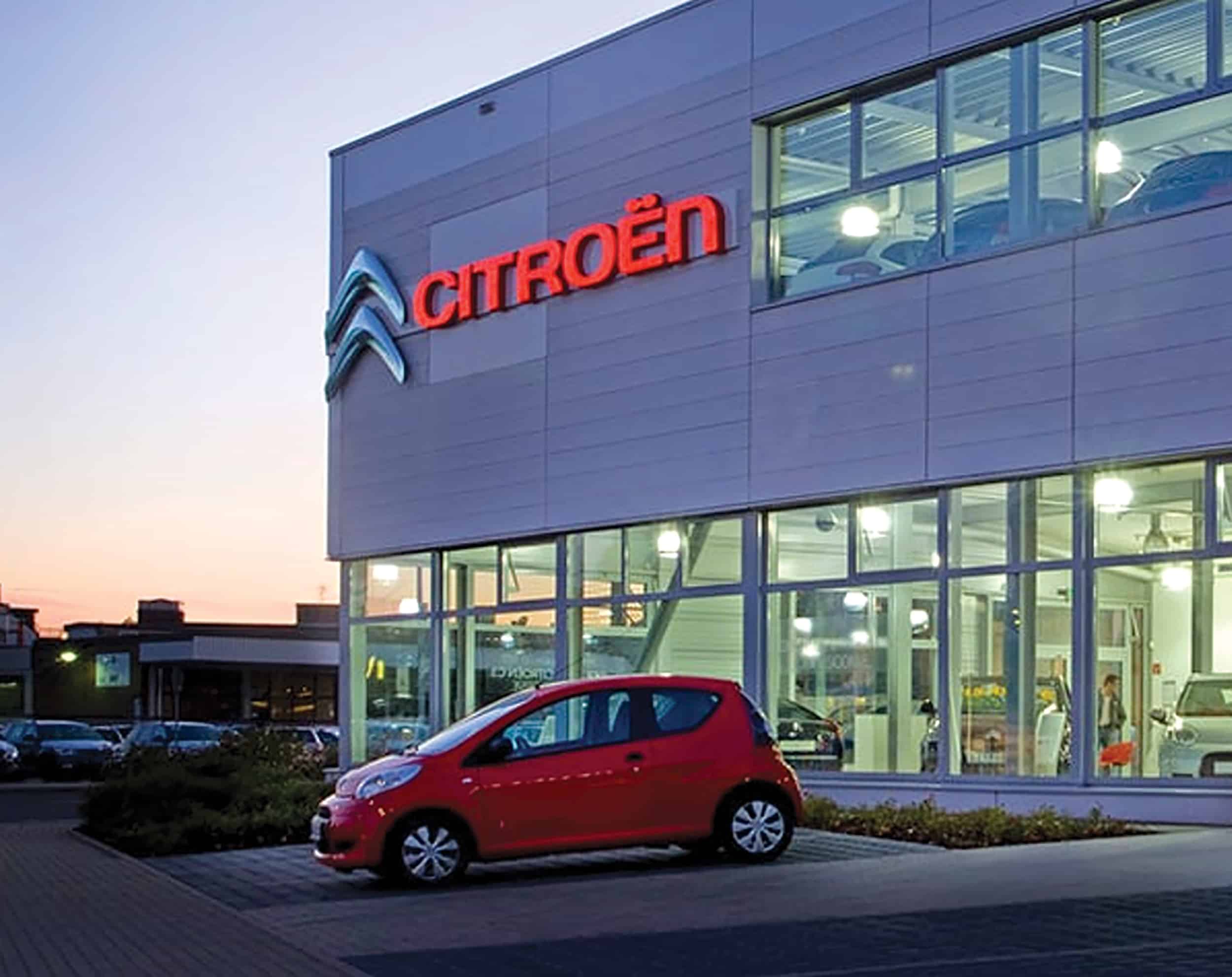
LED power supplies are available in both 12V and 24V. Each has its advantages.
In most cases, complex designs such as logos and delicate serif fonts can be easily outlined for a halo effect or sandwiched between acrylic sheets to provide a fully lit letter. The strong adhesive backing stays firmly in place once it has been pressed down. Plus, most strips allow you to snap or cut the module if you need to make a bend that the tape cannot conform with. Just break, solder wires together and adhere. Keep in mind that while some exterior-friendly options are available, most LED tape products are not rated for outdoor use.
Once you’ve chosen your lighting solution and mapped out the wire runs, it’s time to select power supplies. The choice may be simple: Did you purchase 12V or 24V modules or tape? If you’ve already made a decision or purchased the lights, then just get what’s specified.
Now if you’re at the design stage, it makes sense to consider the options. On one hand, 12V power supplies are typically safer to work with due to the low voltage (in addition to being relatively inexpensive). On the other, a 24V power supply will provide 100W vs. 60W of power — which may allow you to have fewer supplies for a given sign. You can generally get longer runs with a 24V supply as well.
While 12V is fine in most cases, if you are building very large signs and have long runs, then the 24V may be the better solution. For some projects, it may make sense to go with a 24V supply if the power supply is not in close proximity to the sign, as thinner-gauged wire may be used for the connection.
If we were going to predict what you’ll use in your next lighted sign, we’d guess LED modules married with 12V power supplies. While it’s great to know that 24V power supplies and modules are available, the bulk of the market is powered by 12V. We can also see some great uses for LED strips in signs, but for now they’re more for niche, indoor applications. The great thing about today, however, is you do actually have options.
PHOTO GALLERY (6 IMAGES)
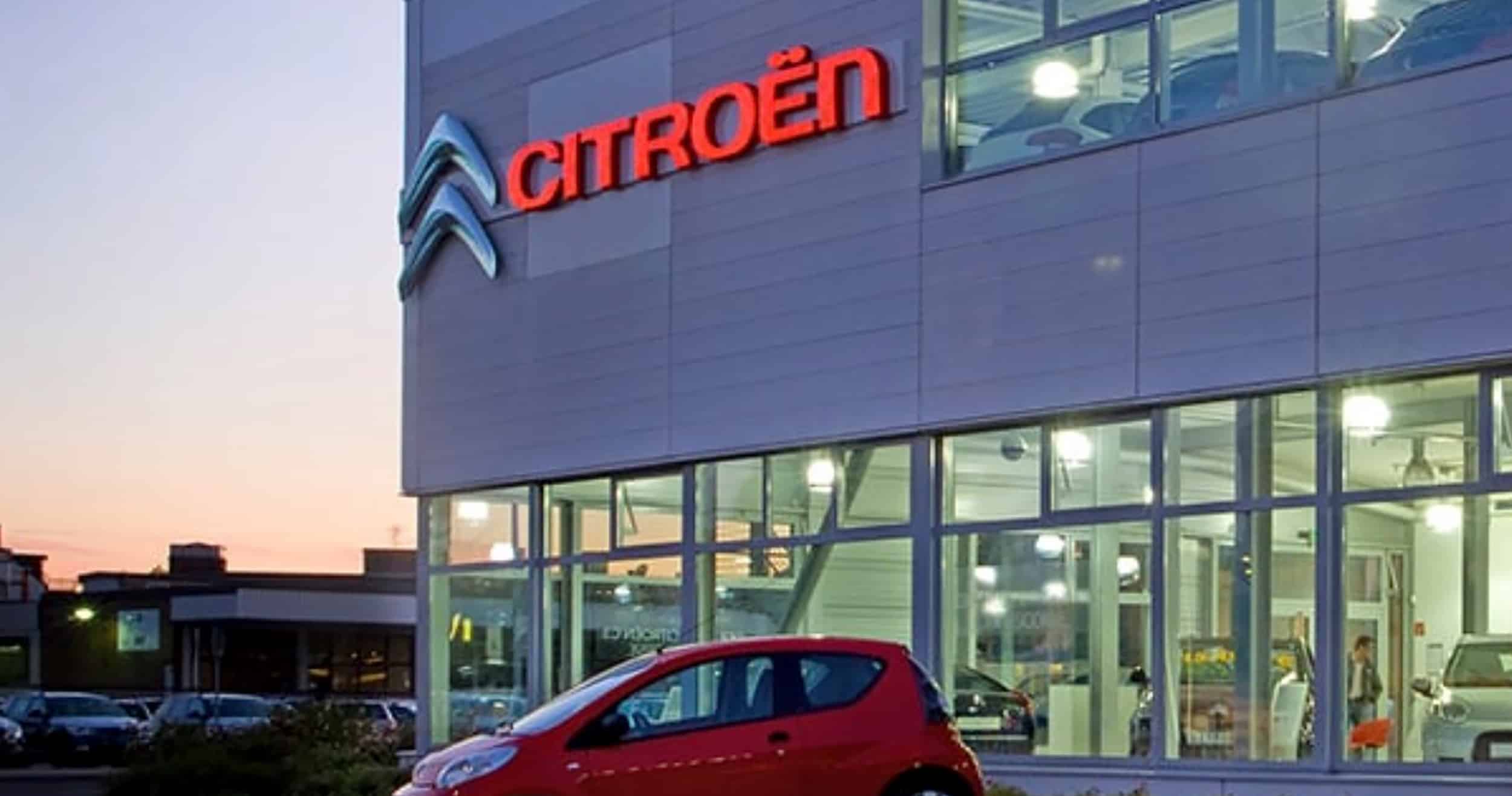

 Tip Sheet2 weeks ago
Tip Sheet2 weeks ago
 Real Deal2 weeks ago
Real Deal2 weeks ago
 Paula Fargo3 days ago
Paula Fargo3 days ago
 Photo Gallery20 hours ago
Photo Gallery20 hours ago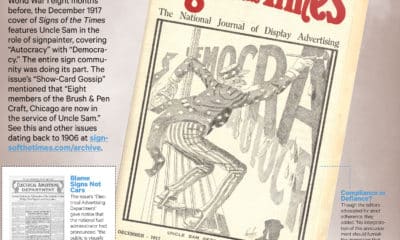
 Signs of the Times4 days ago
Signs of the Times4 days ago
 News1 week ago
News1 week ago
 Special Report1 week ago
Special Report1 week ago
 News2 weeks ago
News2 weeks ago

